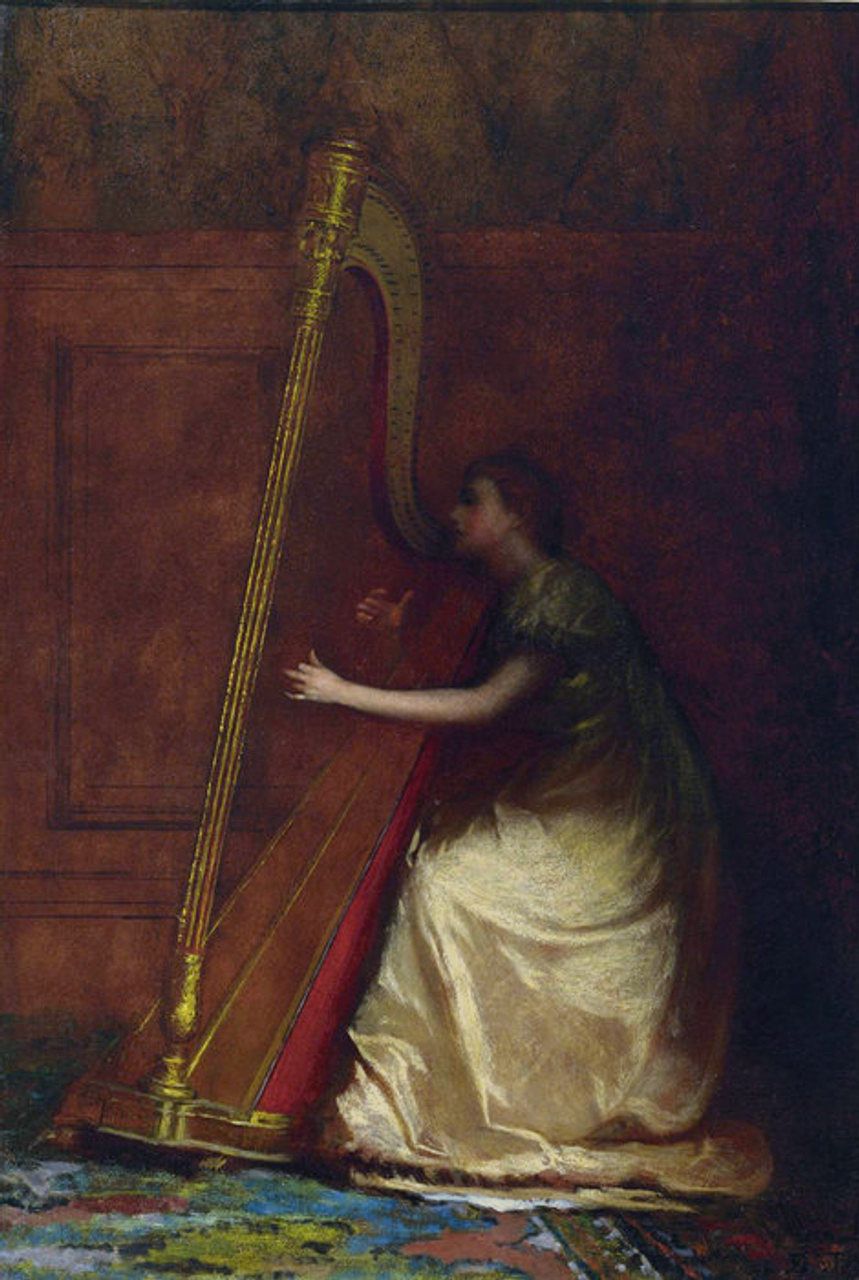Eastman Johnson (1824–1906)
Woman Playing a Harp, c. 1885
Oil on canvas
McMullen Museum of Art, Boston College, Gift of Alexandria & Michael N. Altman P’22, ’24, ’26, 2021.1

John McCoy
Assistant Director, McMullen Museum

The 1907 estate sale in which this painting was auctioned provides this description: “A young lady, dressed in a short-sleeved Empire gown of ecru satin, sits playing a large harp, which is partly gilded and partly painted red. The light falls upon her outstretched left hand and the lower part of her figure. The head and shoulders are in luminous shadow. In the background is suggested the interior of a room panelled in mahogany.”1 This painting puts us in the point of view of a houseguest being entertained in a rich parlor; the young woman is not a concert musician but a lady of society performing as a host.
Young upper-class women of the nineteenth century were expected to prepare themselves for society life and marriage through a refinement of manners and culture that typically included developing themselves musically. Pianos and harps were the most common instruments for women’s instruction, allowing one to sing while playing. The harp was associated with antiquity, as the instrument developed from the lyre used in classical Greece; a connection emphasized here by the fluting of the harp’s pillar to resemble a Doric column. Johnson has carefully depicted the player’s technique: the woman is using the traditional French method of playing, in which the forearms rest on the sides of the soundboard and the right arm supports the instrument’s weight. This produces a softer sound than the twentieth-century Salzedo method, now largely used in an orchestral setting, in which the arms are held horizontally, away from the harp.
